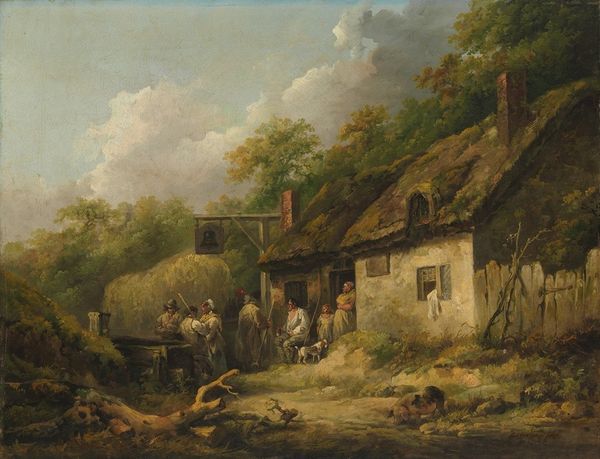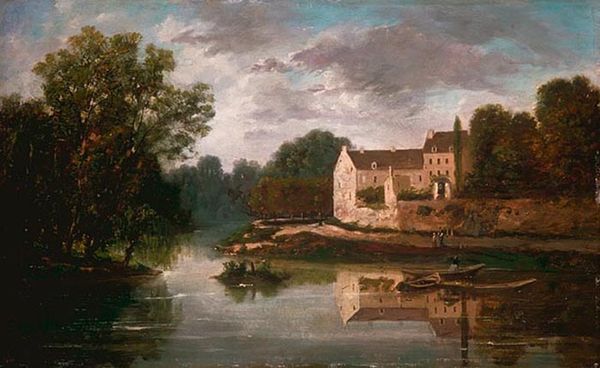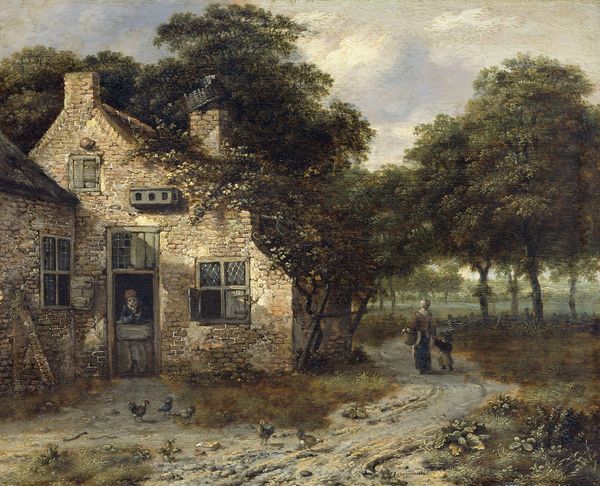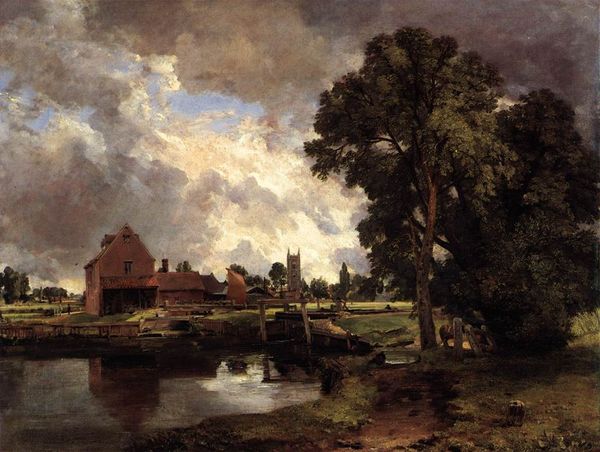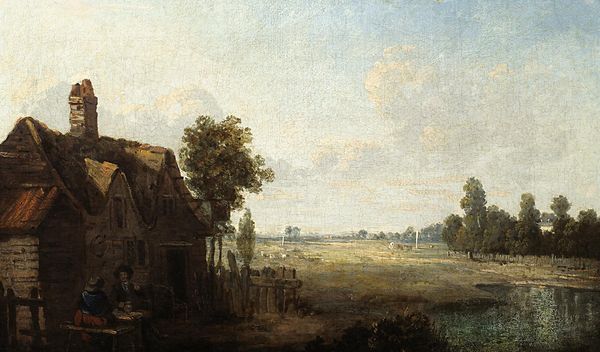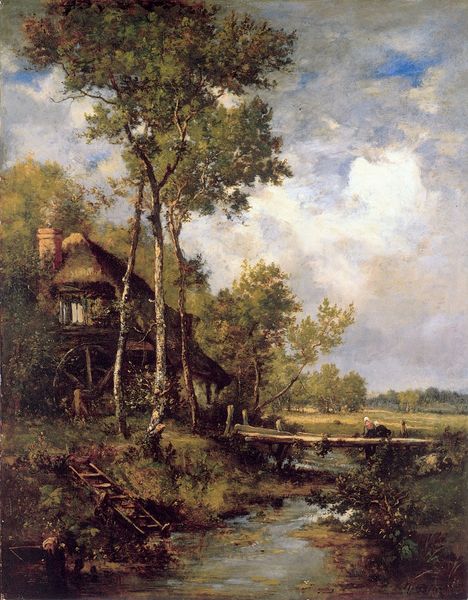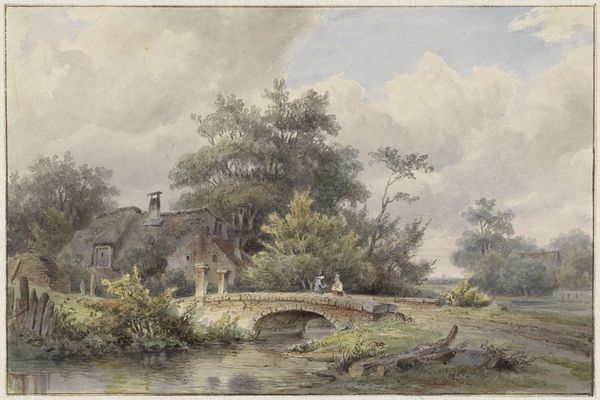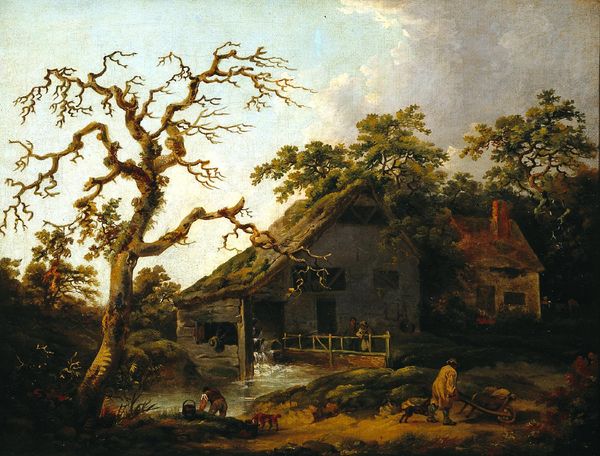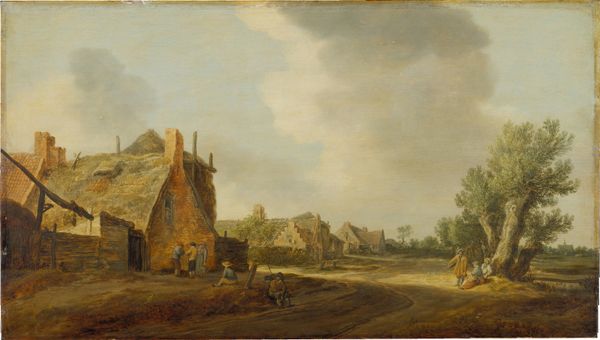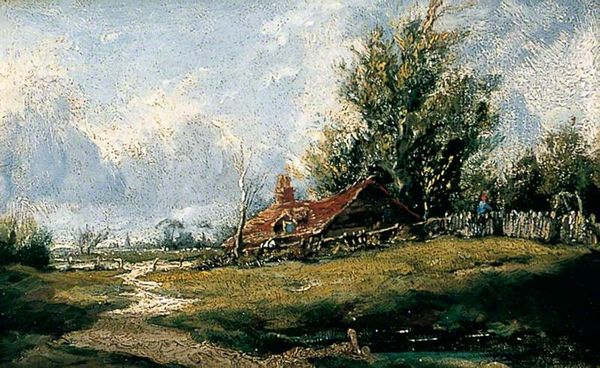
Dimensions: support: 298 x 391 mm
Copyright: CC-BY-NC-ND 4.0 DEED, Photo: Tate
Editor: So, this is Patrick Nasmyth's "Landscape." It’s undated, but he lived from 1787 to 1831. It's quite small, oil on support, and immediately evokes a sense of pastoral calm for me. What draws your eye when you look at it? Curator: It whispers a story, doesn't it? That dappled light on the cottage, the way the trees embrace the building... It feels like a memory, softened by time. Notice how Nasmyth uses the water as a mirror, reflecting not just the scene, but perhaps also our own longing for simpler times. Do you sense that too? Editor: I do. The reflections almost double the tranquility. I hadn’t thought of the mirror effect as a longing, though. Curator: Art is a Rorschach test, isn’t it? What you bring to it shapes the reflection you see. Nasmyth’s skill lies in creating a space where such personal reflections can occur. Editor: I love that idea! Curator: I am glad you do!
Comments
Join the conversation
Join millions of artists and users on Artera today and experience the ultimate creative platform.
tate 7 months ago
⋮
Patrick Nasmyth was the son of a landscape painter named Alexander. He had pioneered a specifically Scottish imagery in tune with resurgent Scots nationalism, but his son lived and worked in England and pursued a more formulaic route. Patrick’s often generalised landscapes were modelled on the seventeenth-century Dutch art favoured by collectors. They proved very popular. Patrick’s brother, James, summed up the stock features of such pictures: ‘decayed pollard trees, old moss-grown orchards, combined with cottages and farmhouses in the most paintable state of decay, with tangled hedges and neglected fences overrun with vegetation.’ Gallery label, September 2004
